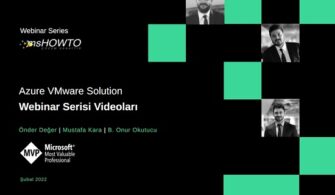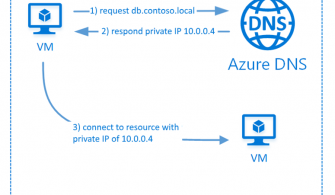Disasters such as earthquakes can have a significant impact on communities and can result in loss of life, damage to infrastructure, and disruption of services. In order to respond effectively to these events, it’s important to have access to real-time data and insights about the affected areas. The integration of Internet of Things (IoT) and cloud computing can provide a powerful solution for monitoring and responding to disasters, by enabling organizations to collect, store, and analyze large amounts of data from a wide range of sources.
The following architectures provide examples of how IoT and Azure can be used to support disaster response efforts in both the affected area and the near area. These architectures demonstrate how organizations can leverage the power of IoT and cloud computing to gain a comprehensive understanding of the impact of earthquakes, and to respond quickly and effectively to protect lives and property.
Architecture for earthquake-affected areas
Edge Devices: The smart sensors are deployed at the edge of the system, in the building where they are needed to detect signs of life. The sensors can be powered by battery, solar, or other means, and are designed to be small, low-power, and durable.
IoT Gateway: The smart sensors communicate with an IoT gateway, which acts as a bridge between the edge devices and the cloud. The IoT gateway collects data from the sensors, performs initial processing, and transmits the data to the cloud.
Azure IoT Hub: The data from the IoT gateway is transmitted to an Azure IoT Hub, which acts as a central repository for all data from the sensors. The IoT Hub provides secure, scalable, and bi-directional communication between the edge devices and the cloud.
Stream Analytics: The data from the IoT Hub is processed by Azure Stream Analytics, which performs real-time analytics on the data to identify patterns and anomalies. The Stream Analytics can be configured to trigger alerts if it detects signs of life.
Azure Functions: Azure Functions can be used to process the alerts generated by Stream Analytics and take action. For example, the Azure Functions can send notifications to first responders, log the alert information in a database, or initiate a drone deployment to search for survivors.
Azure Machine Learning: Azure Machine Learning can be used to build and deploy predictive models for earthquake response. For example, machine learning models can be used to predict the likelihood of a building collapsing based on data from smart sensors, and provide real-time insights to first responders.
Power BI: Power BI can be used to visualize the data from the smart sensors and provide real-time insights into the status of the building and the rescue effort.
This architecture provides a scalable and flexible solution for integrating smart sensors with Azure, and can be easily adapted to the specific requirements of an earthquake response effort.
Architecture for Areas near an earthquake-affected area
IoT Devices: IoT devices, such as sensors and cameras, can be deployed in the near area to monitor and gather data about the earthquake’s impact, including ground vibrations, air quality, and temperature.
IoT Gateway: An IoT gateway, such as a Raspberry Pi or Advantech WISE-7622, can be used to collect and transmit data from the IoT devices to the cloud.
Azure IoT Hub: Azure IoT Hub can be used to securely manage the connection and communication between the IoT devices and the cloud. The IoT hub can also be used to store and process data from the IoT devices.
Azure Stream Analytics: Azure Stream Analytics can be used to analyze real-time data from the IoT devices and trigger alerts or actions based on predefined conditions. For example, if the data indicates a potentially hazardous situation, an alert can be sent to first responders.
Azure Machine Learning: Azure Machine Learning can be used to perform predictive analysis on the data collected from the IoT devices. For example, it can be used to predict the likelihood of aftershocks or secondary damage in the near area.
Azure Storage: Azure Storage can be used to store the data collected from the IoT devices for later analysis and reporting.
Azure Power BI: Azure Power BI can be used to visualize and present the data collected from the IoT devices in a user-friendly format. For example, it can be used to create dashboards and reports that show the impact of the earthquake on the near area in real-time.
This architecture provides a scalable and flexible solution for monitoring and responding to the impact of earthquakes in the near area. By leveraging the power of IoT and Azure, organizations can ensure that they have the necessary data and insights to make informed decisions and respond quickly and effectively to disasters.
In conclusion, IoT and Azure provide a powerful solution for monitoring and responding to the impact of earthquakes. By leveraging the power of IoT devices, cloud computing, and advanced analytics, organizations can gain a real-time understanding of the situation, make informed decisions, and respond quickly and effectively to disasters. These architectures demonstrate how IoT and Azure can be used to support disaster response efforts in both the affected area and the near area, providing a scalable and flexible solution for protecting lives and property. With the increasing popularity of IoT and cloud computing, it’s likely that we’ll see more and more innovative solutions emerge that help organizations to respond to disasters in new and effective ways.
“Here are some of the providers mentioned in the architectures:
Raspberry Pi: Raspberry Pi is a popular, low-cost, and highly customizable IoT gateway that can be used for a wide range of applications, including disaster response. Raspberry Pi can be equipped with various sensors and peripherals to collect data, and can be connected to the cloud for data processing and analysis.
Advantech WISE-7622: The Advantech WISE-7622 is an industrial-grade IoT gateway that is designed for harsh environments and rugged conditions. It is equipped with multiple communication interfaces, including Wi-Fi, cellular, and Ethernet, making it ideal for use in disaster-stricken areas.
Sierra Wireless Octave: The Sierra Wireless Octave is a rugged and highly secure IoT gateway that is designed for use in harsh environments and remote locations. It supports multiple communication technologies, including Wi-Fi, cellular, and satellite, and can be used to connect various sensors and devices to the cloud.
Nokia Impact: The Nokia Impact is a cloud-ready IoT gateway that is designed for use in harsh environments and extreme conditions. It is equipped with multiple communication interfaces, including cellular, Wi-Fi, and Ethernet, and can be used to collect and transmit data from various sensors and devices.
Dell Edge Gateway: The Dell Edge Gateway is a compact and highly customizable IoT gateway that is designed for use in a wide range of industrial and commercial applications. It supports multiple communication technologies, including Ethernet, Wi-Fi, and cellular, and can be used to collect and transmit data from various sensors and devices.
These providers offer a range of tools and services that can be used to implement the disaster response solutions outlined in the architectures. By leveraging the power of these technologies, organizations can ensure that they have the necessary data and insights to make informed decisions and respond quickly and effectively to disasters.”
Referanslar




